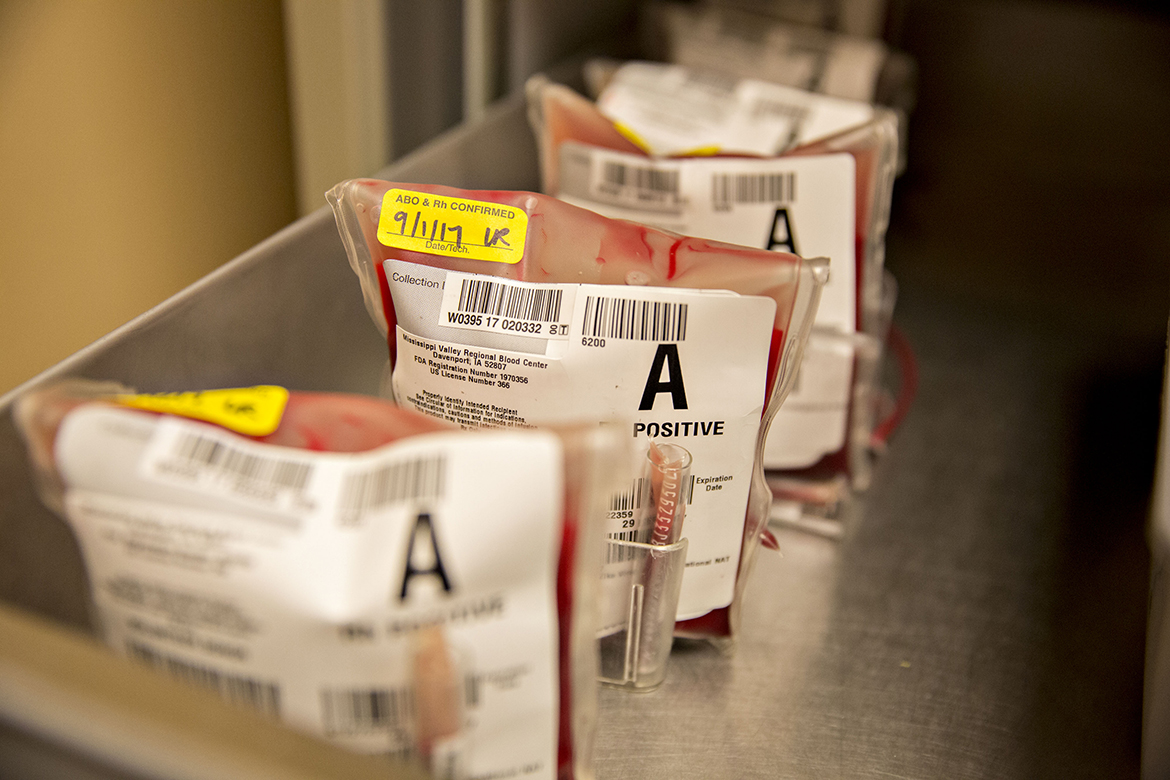When Corinne Standefer retires as a volunteer from the Lane Bloodworks in Eugene, Ore., this month, she will have donated 37 years of her life — and almost 19 gallons of blood.
The 89-year-old gave her first pint decades ago to help a friend who had cancer.
“When they called me and said ‘Could you donate again?’ I just started coming in,” she recalled.
So, every eight or nine weeks, as often as it’s allowed, Standefer would roll up a sleeve and become one of the prized older donors who contribute the bulk of the U.S. blood supply. Overall, nearly 60 percent of blood donations come from people over 40 — and nearly 45 percent come from people older than 50, according to the AABB, an international nonprofit focused on transfusion medicine and cellular therapies.
There’s a problem with that, though. Like Standefer, many regulars are aging out of the donor pool. Increasingly, blood industry experts say, there are too few young people lining up to replace them.
“The older generations seemed to have internalized the message that we always have to have an adequate supply of blood on the shelves,” said Dr. James AuBuchon, president and chief executive of Bloodworks Northwest in Seattle. “The younger generations just seem less wired toward that message.”
For people who grew up during World War II — and their children, the baby boomers — blood donation was a civic duty that became a lifelong habit.
“It was a cultural thing to donate,” said Marie Forrestal, president of the Association of Donor Recruitment Professionals, or ADRP, a division of America’s Blood Centers.
That cultural norm has changed, though, and for nearly a decade, blood banks have focused on recruiting teens and young adults, often through high school and college blood drives.
“We’re trying to capture the people who are 16 and older,” Forrestal said.
The tactic has been successful: Kids in the youngest age groups — 16-18 and 19-22 — now account for about 20 percent of all donations.
But that’s not enough to compensate for lower turnout among people in their late 20s and 30s who can be harder to reach, more mobile and less inclined to donate than other generations. Fewer than 10 percent of blood donations come from people ages 23-29, with a little more than 12 percent from people in their 30s.
“Sometimes we see them come back when life kind of smacks them in their face in their 40s,” Forrestal said.
Even as donor demographics have changed, so has America’s thirst for blood. Overall, blood use has dropped by about a third in the past decade, largely because of improvements in surgical technique and a focus on blood conservation, AuBuchon said.
The 13.1 million units of whole blood and red blood cells transfused in 2013 represented a 4.4 percent decline compared with 2011, a recent analysis by the Centers for Disease Control and Prevention showed.
But the dip in donors has fallen faster. Latest figures aren’t out, but AuBuchon, a former AABB president, estimates that about 11 million units of blood were donated last year, down from more than 14.2 million collected in 2013. He estimates the number of donors has dropped from 6.8 million to about 6 million in that time.
“It is increasingly difficult to keep this smaller amount of blood on the shelf,” AuBuchon said. “There is considerable concern about the stability of the blood system.”
Sporadic shortages often occur now in select areas of the country and at times of historically low donation — summer vacation, winter holidays, flu season. But those shortages could become worse if new donors aren’t found, AuBuchon said.
The key to motivating younger donors is innovation, said Forrestal, who oversees donor recruitment for New Jersey Blood Services, a division of the New York Blood Center.
“Facebook was hot four or five years ago. Now it’s much more Instagram and [the pitch has] got to be interesting and catchy,” she said.
Forrestal’s team lured Pokémon Go players to a blood center last summer. This year, they’ve partnered with Whole Foods markets to bring bloodmobiles to the grocery store parking lots.
There are times, however, when donors, including many young people, turn out in droves. Lines stretched for blocks after the Pulse nightclub shooting in Orlando, Forrestal noted. The hard part is when interest subsides after a crisis.
“After 9/11, we had lines around the block at the donor center into the night,” she recalled. “Two thousand people said they intended to donate blood. Maybe 2 percent to 5 percent came back.”
The best hope for averting blood shortages may be donors like Courtney Stokes, 19, of Bellingham, Wash. She organized several drives as a high school student — and donated nearly a gallon of blood during that time.
She reassures friends her age who may be afraid of needles or worried the technician won’t be able to find a vein.
“I tell them each donation saves three lives,” she said, quoting blood experts.
But she has another trick up her sleeve: “Honestly, the one thing that I do is tell people there’s free food there,” Stokes said. “Cookies, Goldfish [snacks], apple juice. That usually does it.”
KHN’s coverage of end-of-life and serious illness issues is supported by The Gordon and Betty Moore Foundation and its coverage related to aging & improving care of older adults is supported by The John A. Hartford Foundation.
KFF Health News’ coverage of aging and long-term care issues is supported in part by The SCAN Foundation.
